Ministry Of Women And Child Development Modi 2.0 Govt: What Do Women Of India Expect?
What do the women of India expect from the Ministry of Women and Child Development in the next 5 years? A look, one month into the new Modi 2.0 government.
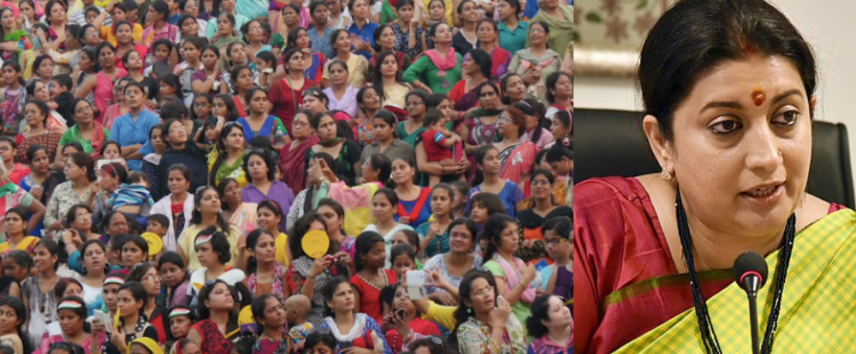
What do the women of India expect from the Ministry of Women and Child Development in the next 5 years? A look, one month into the new Modi 2.0 government.
It’s been a month of the newly formed Modi 2.0 government, and Smriti Irani is the new Minister of Women and Child Development.
First woman Finance Minister of India, Nirmala Sitharaman will present the new government’s first budget today. A perfect moment to look at the Modi 1.0 government and what the Ministry of Women and Child Development has managed to accomplish (or not accomplish) in 2014-19, and put out what women expect from it in 2019-24.
Beti Bachao Beti Padhao
Timeline
Launched in 2015.
Objectives
Beti Bachao Beti Padhao aimed to prevent female foeticide, and ensure the survival of the girl child, along with her education and rightful participation in society as a citizen.
The latest data by the Ministry of Health and Family Welfare between April 2015 and March 2017 shows an increase in
- the Sex Ratio at Birth (SRB), that indicates the number of live female births against live male births,
- the number of registrations of pregnancies against number of registered childbirths,
- the number of institutional (dispensary/ hospital/ RHC) deliveries.
As a result, enrolment of girls for secondary education has increased to 80.97% in 2015-16 as against 76% in 2013-14. The target of constructing toilets for female students in select districts has also been achieved.
Problems
According to a Bloomberg Quint report, between 2015 and 2018,
- Over 56% of the funds earmarked for the scheme were reportedly spent on media and promotional activities.
- A meagre 5% were allocated for their health and education interventions, and another 5% for the training and development required for the scheme.
- Male female sex ratio has also dipped significantly in a few states and UTs despite government reports claiming otherwise.
Corrections required
- These aberrations need to be accounted for and set right in the 2019-24 term of the government.
- Targets should be fixed in a more realistic manner.
- Expenditure on frivolous matters should be restricted.
Pradhan Mantri Matru Vandana Yojana
Timeline
- Launched in 2010 by Congress govt as Indira Gandhi Matritva Sahyog Yojana (IGMSY).
- 2014 – renamed Matritva Sahyog Yojana.
- Since 2017 known as Pradhan Mantri Matru Vandana Yojana (PMMVY).
Objectives
- to encourage women to register for institutional delivery
- to instill good nutrition practices among women during pregnancy and post-delivery, to ensure good health of both the mother and child.
- to partially compensate the woman for wage loss due to pregnancy and childbirth
This cash incentive, amounting to 5000/- is deposited in three installments, directly to the bank/post office account of the pregnant/lactating mothers, subject to fulfillment of certain conditions.
- 1000/- Early registration of pregnancy
- 2000/- After 1st antenatal check-up, at 6 months of pregnancy.
- 2000/- Birth registered and child received first cycle of BCG, Oral Polio Vaccine, DPT, Hepatitis-B
The beneficiaries also get 1000/- under the Janani Suraksha Yojna for choosing institutional delivery.
This scheme is, however, limited to women above the age of 19 years and for the first living child only.
Read more about it here and here.
Problems
However, according to a report published in DownToEarth magazine in September 2018,
- the scheme does not reach a large number of women because of the conditions laid down.
- mothers of at least 57% newborns are not eligible for receiving the benefits now.
- limiting the benefits to only the first living child is in contravention of the National Food Security Act which mandates that all pregnant women must get 6000 rupees as maternity support; it doesn’t restrict benefits on the basis of number of pregnancies.
- cash benefits are not reaching the women even after registration and delivery.
Corrections required
The ministry should examine the processes used and the conditions in the scheme, so that changes can be made to ensure the promised maternity benefits reach the women they are intended for.
Extension of Maternity Leave under Maternity Benefits (amendment) Act 2017
Timeline
Launched in 2017
Objectives
- Increasing available maternity leave from 12 weeks to 26 weeks
- Extension of maternity leave to adoptive mothers and mothers through surrogacy
- Establishment of creche facilities within factory/office premises
An extended, 26 week long maternity leave enables women to provide exclusive breastfeeding to the child for six months and has received widespread appreciation from all quarters.
Problems
Propagates the stereotype of only a mother being a parent and nurturer
Corrections required
Considering the realities of working women, and also fathers who might like to play a more nurturing role, shared parental leave provisions need to be considered. This is already a norm in many European and even some Asian countries.
Projects For Women’s Safety Under Nirbhaya fund
Timeline
Nirbhaya Fund was set up by govt of India in 2013 to enhance measures for women’s safety, in line with the recommendations by Justice Verma Committee.
Objectives
Under PM Modi, a corpus fund of 3600 crores was announced and a number of projects were also launched for ensuring the safety and welfare of women.
The projects, according to this MoWCD booklet and the Press Information Bureau press release, are:
One Stop Center – Sakhi for women facing violence. Here they can get medical, legal, police and psychological support at one place.
OSCs are set being set up in a phased manner in all the districts of the country. So far these centers have offered support to over 1.93 Lakh women.
A Universal Women Helpline is intended to provide 24 hours emergency and non-emergency response to women affected by violence through referral. It is linked with appropriate authority such as police, One Stop Centre and hospital. Any information about women related government schemes/programs across the country can be accessed through a single uniform number (181).
Sexual Harassment at Workplace The Sexual Harassment at Workplace (Prevention, Prohibition and Redressal) Act, 2013 covers all women, irrespective of their age or employment status and protects them against sexual harassment at all workplaces whether organized or unorganized. Students, apprentices, laborers, domestic workers and even women visiting an office are included in the Act.
Online complaint management system titled Sexual Harassment electronic–Box (SHe-Box) was set up for registering complaints related to sexual harassment at workplace. Women employees in the country, including all government and private employees, can lodge a complaint through the SHe-Box.
Panic button on all mobile phones has been made mandatory and it’s further being augmented by an emergency response resource number 112, in collaboration with the Home Ministry.
A lot of steps have been taken to eradicate the practice of child marriage and training of elected members of Panchayats. A Grievance Redressal Cell has also been set up for dealing with the online grievances that are received on issues related to women and children.
The MoWCD report also mentions the launch of Safe City Project in eight cities and upgradation of the existing CFSL lab in Chandigarh. This would enhance the capacity of the lab from 153 tests to 2000 per year and help in faster DNA analysis of pending sexual assault cases.
However, an article by The Wire based on a series of RTIs filed with the MoWCD claims many gaps and contradictions in govt data with regard to the expenditure under Nirbhaya Fund.
For example, the govt had set up a Central Victim Compensation Fund to help victims of crime and distributed 200 crores to 36 states/UTs of which Uttar Pradesh received the highest amount of 28.10 crore, followed by Madhya Pradesh and Maharashtra which got Rs 21.80 crore and Rs 17.65 crore respectively. According to National Crime Records Bureau, in 2016, 38,947 rape cases were registered. That is, four women became victims of the heinous crime every hour.
It is also noteworthy that the CVCF provides a cover to victims of ten other types of crimes as well.
Corrections required
If the state government plans to offer compensation to even 25% of the total rape victims, it will need Rs 292 crore at the rate of Rs 3 lakh per victim.
And these are only those rapes that are reported, just the tip of the iceberg, in Indian society. Reporting of gender based crimes needs to be made easier on the victims, and handled with greater sensitivity – provisions need to be made for this.
Some other laudable initiatives of the government are
- 33% reservation for women in police forces
- Mahila Shakti Kendra for empowering women with opportunities for skill development, employment, digital literacy, health and nutrition
- Guidelines to stop misuse of matrimonial websites and make them safer to use for women
- Providing support to wives of NRIs facing problems in their marriage
- Mandatory mention of widow’s name in death certificates
- Gender Champions – encouraging children to take the lead on gender equality
- Mahila e-Haat – a unique direct-online digital marketing platform for women entrepreneurs/SHGs/NGOs
- Amendment in passport rules – no need to provide husband’s permission and marriage/divorce certificate for application
- Inclusion of acid attack as a cause of disability in Rights of Persons with Disabilities Act, 2016
- New Taxi/Cab Policy – mandatory GPS panic button in all taxis, disabling of child-locking system, prominent display of driver’s ID with photo and vehicle’s registration number
Steps taken for welfare and well-being of children
Poshan Abhiyan – National Nutrition Mission set up on November 30, 2017 with a three-year budget of 9046.17 crores to deal with the problem of anaemia and malnutrition in children, anaemia in adolescent girls and women as well as pregnant women and lactating mothers in a time bound manner.
To help trace missing/trafficked/runaway children and unite them with their families, a citizen-based portal Khoya-Paya was launched in June, 2015. 8746 users registered as on 26th March, 2016 and 10447 cases of missing/sighted children uploaded on the portal
POCSO -eBox launched in August, 2016 to provide the child victims of sexual abuse a safe and anonymous way of making complaint. 1100 complaints received.
Juvenile Justice (Care and Protection of Children) Model Rules, 2016 are based on the philosophy that juveniles need to be reformed and reintegrated into the mainstream of society. Child-friendly procedures include: no child to be handcuffed or sent to jail, to be provided adequate medical assistance, parents/guardians to be informed of all legal aid.
Improving Anganwadi structures – Majority of the existing centers are running in dilapidated structures or rented one-room buildings hence the govt has approved construction of 4 lakh new Anganwadi buildings across the nation by 2019. Approx 150 lakh crore rupees were released till 2018 for construction of new buildings and toilets as well as to provide drinking water facility in Anganwadi centers.
In a significant move, the government has already increased the honorarium of the anganwadi and ASHA workers by 50%.
Expectations from the new government
While most of the initiatives are laudable and have achieved remarkable success, it’s not time to get complacent and sit on its achievements. Indian women would like the government/ministry to:
- Provide more part time employment opportunities for women
- Ensure equal salary for equal work
- Ensure creche facilities in government offices
- Make provisions for shared parental leave
- Remove the restrictive conditions in Matru Vandana Yojna
- Make police officials more gender sensitive
- Even out the anomalies among various laws regarding the definition of ‘child’
- Ensure immediate medical support for a rape survivor
- Develop a victim/witness protection scheme
- Ensure coordination among stakeholders – police, judiciary, social service officials, health officials etc regarding protection of the abused child/ren
Image source: YouTube and By Ministry of Textiles (GODL-India), GODL-India, Link
Disclaimer
Women's Web is an open platform that publishes a diversity of views, individual posts do not necessarily represent the platform's views and opinions at all times.
Stay updated with our Weekly Newsletter or Daily Summary - or both!

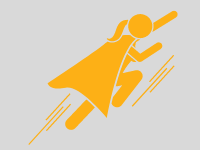





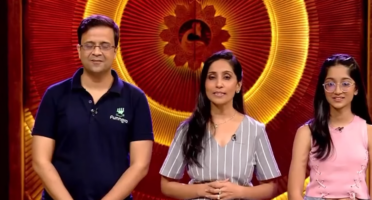
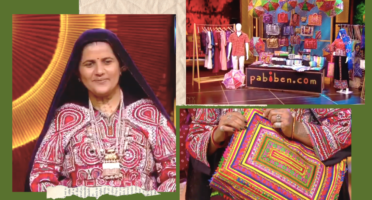

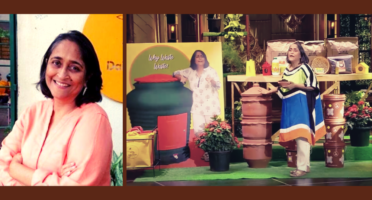








 write
write
 advertise
advertise intern
intern
Comments